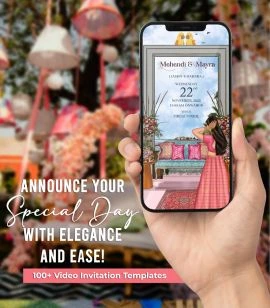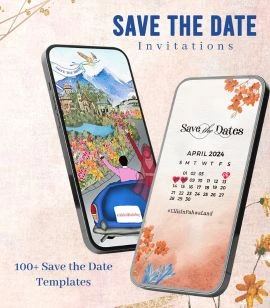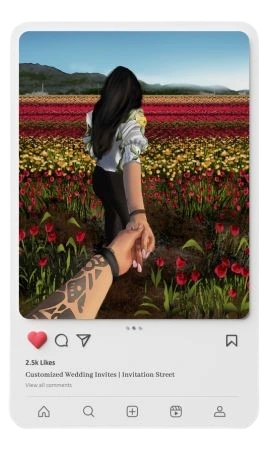Advertisement
By IS Team
Effective Follow-Up Strategies For Corporate Invitations

Advertisement
Effective follow-up strategies for corporate invitations are key to enhancing event success and attendee engagement. By carefully planning a timeline and personalizing communication, you ensure each invitee feels valued.
Utilizing digital tools for automated reminders and integrating feedback mechanisms refine your strategy, making each message resonate more deeply.
Moreover, post-event follow-ups with thank you notes and teasers for future events keep the momentum going, turning one-time attendees into loyal participants. By focusing on these strategies, you create a memorable and impactful event experience. 🌟
Pre-Invitation Strategy

Advertisement
A well-planned Pre-Invitation Strategy sets the stage for a successful event. Here's how you can create a strong foundation from the start.
Planning the Follow-Up Timeline
Timing is crucial! Establish a follow-up timeline from the initial invitation to the event date. Key moments should include:
- Immediately after sending the invite: Confirm receipt and prompt an RSVP.
- Two weeks before the RSVP deadline: Send a reminder about the upcoming deadline.
- One week before the event: Offer final details and build excitement.
This timeline keeps your communication timely and ensures your event remains a priority.
Segmenting Your Guest List
Customize your approach by segmenting your guest list into groups like VIPs, previous attendees, and new invites:
- VIPs: Offer personal touches, such as calls or special notes from leadership, emphasizing their importance.
- Previous attendees: Highlight past experiences and new elements to spark interest.
- New invites: Warmly introduce them to the event's unique value.
Tailoring messages to each segment makes your invites more personal and engaging, increasing the likelihood of attendance. This strategy ensures every invitee feels uniquely valued right from the start. 🌟
Initial Invitation Follow-Up
Effectively managing your initial responses can greatly enhance event participation and attendee satisfaction. Here's how to handle follow-ups post the initial invitation.
Crafting a Thank-You Message for Initial RSVPs
Expressing gratitude is essential. Send a thank-you message immediately after receiving an RSVP. This not only acknowledges the attendee's promptness but also reinforces their decision to participate. Consider wording like:
"Thank you for your prompt response! We are thrilled to have you join us and look forward to an extraordinary event together. Stay tuned for more exciting details!"
This personalized acknowledgment makes attendees feel appreciated and more connected to your event.
Reminder Techniques for Non-Respondents
Engagement doesn't stop at the first invitation. For non-respondents, timing and messaging are key:
- One week after the initial invite: Send a gentle reminder highlighting what they will miss if they don’t attend. Keep it light and engaging.
- Two weeks after the initial invite: Increase the urgency slightly, emphasizing the closing window for RSVPs and the unique opportunities your event offers.
- A few days before the RSVP deadline: Send a final call to action, stressing the final chance to confirm their attendance.
Example message: "Just a friendly reminder: The RSVP deadline for [Event Name] is fast approaching. We wouldn’t want you to miss out on this incredible opportunity to connect and learn. Secure your spot today!"
Using these reminder techniques, you can effectively nudge non-respondents towards making a decision, thereby boosting your event’s attendance. Each message should create a sense of importance and exclusivity, compelling invitees to take action.
Personalization in Follow-Up
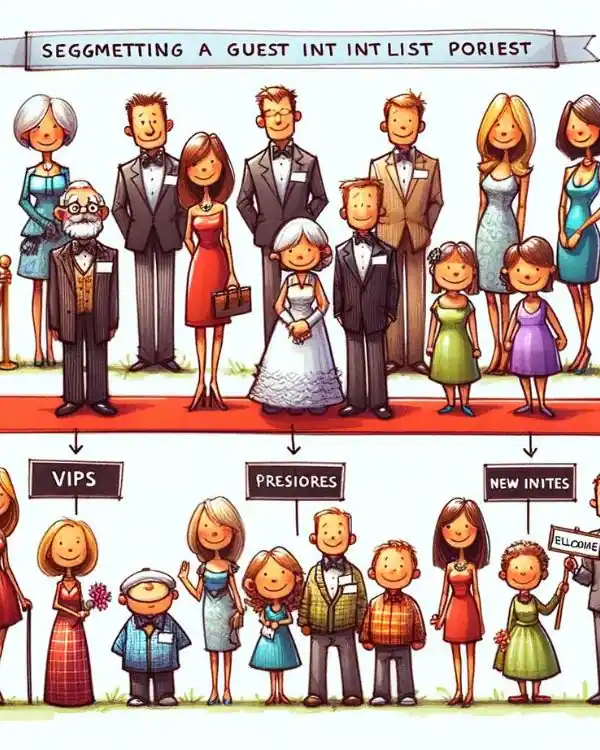
Advertisement
Personalizing your follow-up communications is more than just a courteous gesture; it’s a strategic move to increase engagement and ensure your invitees feel genuinely valued. Here’s how to craft follow-up communications that resonate on a personal level.
The Power of Personalized Follow-Up
When you tailor messages to the specific interests and past behaviors of your attendees, you significantly boost the likelihood of their engagement. Personalization can transform a generic interaction into a compelling, relevant appeal that speaks directly to the recipient:
- Highlighting Past Interactions: Remind them of their previous contributions or experiences at your events. For instance, "We missed your insightful questions at our last panel discussion!"
- Acknowledging Personal Milestones: If applicable, incorporate personal milestones or achievements that align with the event’s theme, such as professional anniversaries or recent promotions.
- Custom Recommendations: Based on their past attendance, suggest specific sessions or speakers they shouldn’t miss. "Based on your interest in digital marketing, you might not want to miss our session on the future of digital advertising."
Examples of Personalized Messages
Here are some examples of how you can personalize messages based on the recipient’s history and preferences:
- For a Previous Speaker: "Hello [Name], your last talk on [Topic] was a hit! We would love to hear your insights again on [New Topic] at our upcoming event. Your expertise would immensely benefit our audience."
- For a Frequent Attendee: "Hi [Name], thank you for being a regular at our events! We noticed you’ve enjoyed our workshops on innovation. Don’t miss this year’s sessions on groundbreaking tech trends!"
- For a First-Time Attendee:
"Welcome [Name]! We’re thrilled to have you join us. We've arranged a special meet-and-greet at the start of the event to help you network with fellow first-timers and feel right at home."
Using these personalized approaches not only enhances the recipients' anticipation and interest in the event but also deepens their connection to your brand. Each message is a step towards building a more engaged, loyal community around your events. 🌟
Content of Follow-Up Messages
Crafting compelling follow-up messages is an art that balances informative content with engaging delivery. Here’s how to ensure your messages are impactful and drive your invitees to action.
Essential Elements of Follow-Up Messages
Your follow-up communications should be more than just reminders. They need to be rich in content that informs, excites, and motivates. Include:
Agenda Updates: Keep attendees in the loop with any new additions or changes in the schedule. This keeps the event fresh in their minds and builds anticipation.
Speaker Highlights: Feature snippets about key speakers or notable attendees. This not only highlights the value of your event but also personalizes the message by aligning with the interests of your invitees.
- Logistical Information: Provide essential details such as venue changes, transportation options, parking instructions, or anything else that helps in planning their visit. Clear, practical information is always appreciated.
Creating a Sense of Urgency
Encouraging prompt action without coming off as pushy is crucial. Here are some techniques to create a sense of urgency gracefully:
- Limited Spots Available: Use phrases like “Seats are filling up fast!” or “Limited spots available!” to convey exclusivity and scarcity without pressure.
- Countdowns: Include a countdown to the event or deadline. “Only three days left to register!” This creates a natural urgency as the event approaches.
- Special Offers: Mention any early bird specials or last-minute deals. “Register by [date] to receive your exclusive welcome pack!” offers a tangible incentive to act quickly.
- Highlight What They’ll Miss: Rather than just stating they should attend, detail what they stand to lose if they don’t. “Don’t miss out on this year’s keynote on [exciting topic]!”
By blending essential information with strategic emotional triggers, your follow-up messages can effectively persuade without pressure, making them a vital tool in your event’s success toolbox. Each message should not only remind but also excite and motivate your invitees, pushing them one step closer to attending. 🚀
Feedback Loop
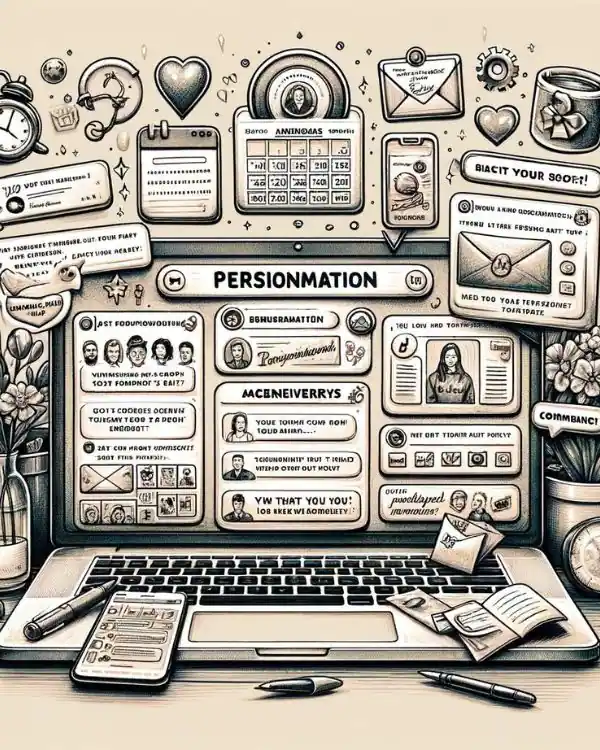
Advertisement
Creating a robust Feedback Loop is crucial for refining your event strategies and ensuring communications resonate with your audience.
Encouraging Feedback on the Invitation Process
Make it simple and appealing for attendees to provide feedback:
- Post-Registration Feedback: After registration, send a quick survey to gauge their experience. "We’d love your thoughts on the registration process. Could you share your feedback?"
- Pre-Event Surveys: Ask attendees a few days before the event about their expectations or specific interests, helping you tailor the event experience.
- Feedback Stations at the Event: Set up easy-access stations or digital kiosks for real-time feedback, allowing for immediate improvements.
Using Feedback to Enhance Personalization and Effectiveness
Use feedback to tailor communications and enhance the attendee experience:
- Segment Responses: Analyze feedback by attendee type (e.g., first-timers, regulars) and customize your follow-ups accordingly.
- Identify Common Themes: Adjust your strategies based on common feedback points. For example, simplify the registration process if many find it cumbersome.
- Highlight Positive Aspects: Use praises from past feedback in your communications to attract new attendees. "Join us and experience our acclaimed keynote sessions!"
- Respond to Feedback: Show attendees their opinions matter by addressing their suggestions in your communications. “Thanks to your suggestions, we’ve improved our registration process!”
By actively incorporating feedback into your planning, you build a more engaged and loyal community, enhancing both the event experience and your communication strategies. 🌟
Final Push Before the Event
The last week before your event is crucial for securing attendance and ensuring everything runs smoothly. Here’s how to make a Final Push that counts.
Strategies for the Last Week
Maximize the impact of your last communications with strategic reminders and motivational messages:
- Final Reminders: Send out a detailed reminder a week before the event, reiterating the time, venue, and any special instructions. Emphasize any exciting last-minute additions to the agenda that might attract more attendees.
- Motivational Messages: Boost enthusiasm with messages that highlight the benefits of attending. "Get ready to transform your approach with insights from leading experts!"
- Last-Minute Details: Update attendees with any logistical changes or additional information that could impact their experience. Ensure these messages are clear and concise to avoid any confusion.
Handling Last-Minute Confirmations and Cancellations
Efficiency is key when dealing with last-minute changes:
- Streamlined Confirmations: Use your digital platform to make last-minute confirmations as smooth as possible. Ensure attendees can confirm their attendance with a simple click.
- Efficient Cancellation Process: Provide a straightforward way for attendees to cancel if necessary. Quickly adjust your planning accordingly to accommodate the new attendee count.
- Waitlist Activation: If you have a waitlist, promptly offer spots to waitlisted individuals as they become available. This not only fills seats but also appreciates those who showed interest initially.
By implementing these final-week strategies, you ensure a strong turnout and a well-organized event. This last push is your opportunity to solidify the excitement and readiness for what promises to be a fantastic event experience. 🚀
Post-Event Follow-Up
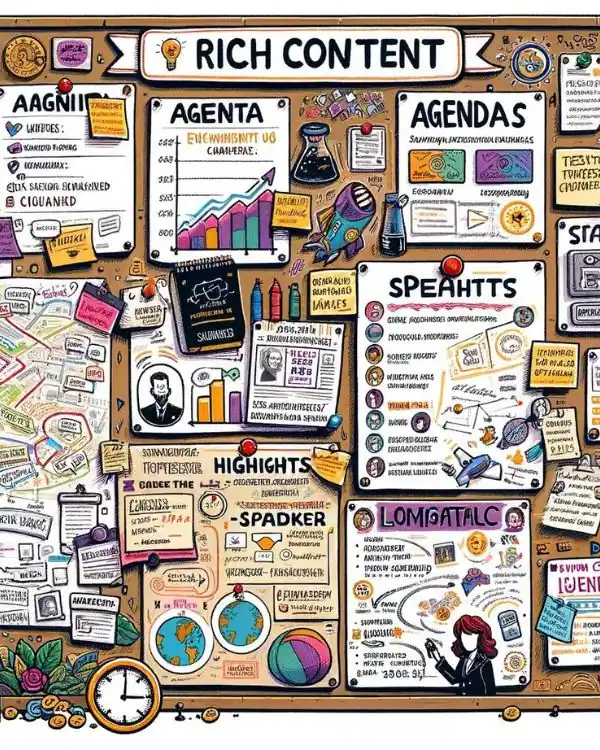
Advertisement
Effective Post-Event Follow-Up is crucial for maintaining engagement and nurturing long-term relationships with attendees.
Importance of Post-Event Follow-Up
Post-event follow-ups keep the conversation alive and help transform one-time attendees into loyal participants. They reinforce the connections made during your event and show your appreciation.
Suggested Post-Event Follow-Up Actions
- Thank You Notes: Send personalized thank you notes shortly after the event, acknowledging specific contributions or participation. "Thank you for your engaging questions during our sessions!"
- Feedback Surveys: Quickly distribute feedback surveys to capture attendees' impressions while the event is fresh in their minds. Keep surveys concise, focusing on what attendees enjoyed and areas for improvement.
- Teasers for Future Events:
Build excitement for future gatherings with teasers for upcoming events. Offer a glimpse of what’s coming and any early registration benefits. "Don’t miss our next tech innovation conference this fall!"
These follow-up strategies enhance attendee satisfaction and pave the way for ongoing engagement, helping to cultivate a committed and enthusiastic community. 🌟
By integrating these strategies into your corporate invitation process, you not only enhance the experience for each attendee but also elevate the overall success of your events. Remember, each interaction is an opportunity to build relationships and foster a community around your brand. Let’s make every invitation count! 🌟
Frequently Asked Questions
How can I ensure that my follow-up messages are read by the attendees? Use engaging subject lines and personalize the email content to increase open rates. Additionally, sending messages at optimal times based on past engagement data can improve visibility.
What is the best way to measure the return on investment (ROI) from follow-up strategies? Calculate ROI by comparing the cost of your follow-up campaigns against the increase in attendee numbers and engagement levels. Tracking attendance and participant feedback can also provide insights.
How frequently should I send follow-up messages to avoid overwhelming my invitees? Typically, start with an initial thank-you message or confirmation, followed by periodic updates leading up to the event. Avoid sending more than one message per week unless the event is imminent.
Can follow-up strategies differ based on the type of event? Yes, tailor your follow-up strategies to the event type. For example, formal events might require more subdued and professional messaging, while casual events can take a lighter, more humorous approach to engage attendees.
Advertisement
I'm Looking For!




